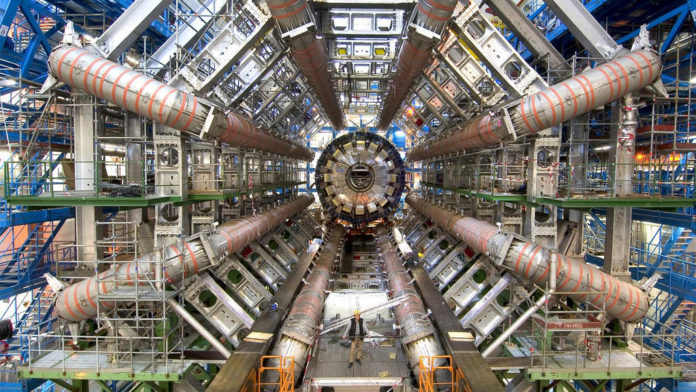The more humanity learns about physics, the less we truly understand about gravity, light, subatomic particles’ behavior, and life in general. Still, physics researchers and universities are ten-toes-down when it comes to pursuing knowledge related to physics.
One way to learn things about subatomic particles and how they interact with one another in nature is by studying experiments in particle accelerators. Also known as colliders, particle accelerators shoot particles directly at one another at super-fast speeds. For a mere fraction of a second, scientists can observe how those particles interact upon collision. After enough experiments, small advances regarding physics and the laws of nature can be harvested.
The Large Hadron Collider is a large, circular particle accelerator that began use in 2008. Some 17 miles long, the Large Hadron Collider is buried underneath roughly 600 feet of earth somewhere between France and Switzerland. Requiring a full decade to be constructed, designers collaborated with some several hundred universities around the world, not to mention in excess of 10,000 researchers, to successfully be built.
Researchers have recorded dozens of discoveries since the Large Hadron Collider has been in operation, arguably the most notable and important of which is the discovery of the Higgs boson, the most elementary subatomic particle.
As if the 17-mile-long Large Hadron Collider isn’t good enough, physicists have proposed a plan for a pair of Future Circular Colliders.
The Future Circular Colliders are slated to be 62 miles in circumference, nearly four times as long as its not-so-Large Hadron Collider counterpart. The particle accelerators would likely begin working around 2040, though no plans to build the Future Circular Colliders has been set in stone.
Experts share that particles accelerated and run into one another by the two Future Circular Colliders would generate roughly 10 times as much collision energy.
The Large Hadron Collider’s life will end around the 2030s when all planned experiments slated to be carried out in the 17-mile-long particle collider will have been completed. This information comes from one of the collider’s leading physicists and leader of the study regarding the feasibility of the Future Circular Colliders, Michael Benedikt.
Unfortunately for researchers, the Large Hadron Collider can only smash particles at speeds not fast enough to research all the mysteries regarding the laws of nature. The FCC, constructed in two parts, would cost roughly $10.25 billion United States Dollars.









